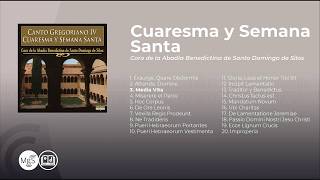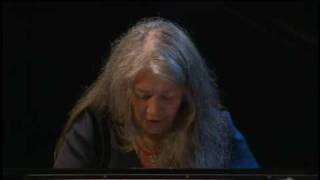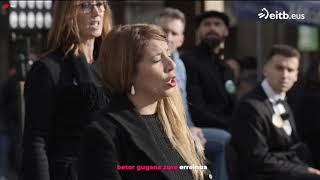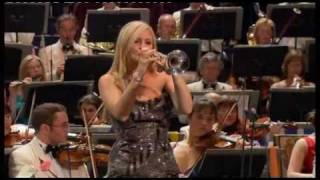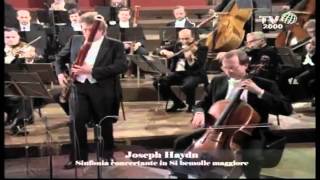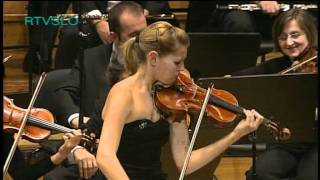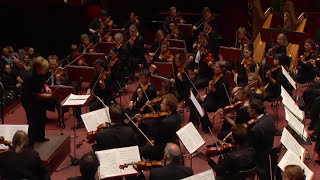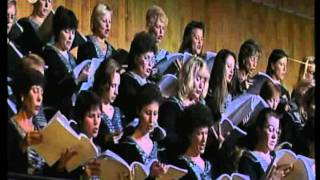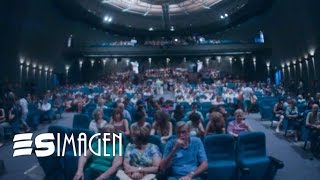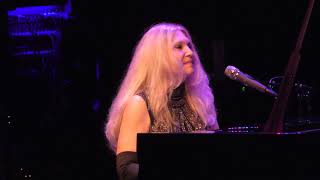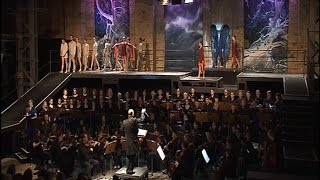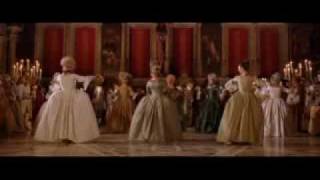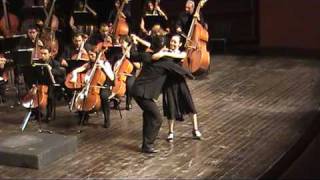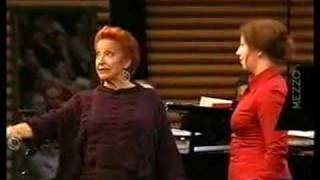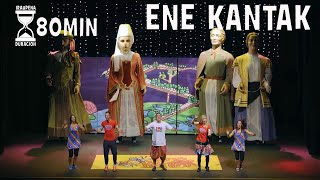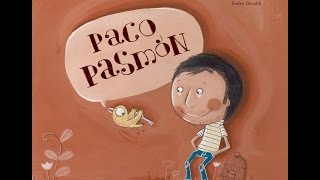On April 2, the Catholic Church celebrates Palm Sunday with which Holy Week begins
Recommended music videos for initiation to classical music
Gregorian Chant is a plain, simple, monodic chant with music subject to the text used in the liturgy of the Catholic Church . The name Gregorian chant comes from the fact that its compilation is wrongly attributed to Pope Gregory the Great ; it is an evolution of the Roman chant confronted with the Gallican chant . The text is the raison d'être of Gregorian chant ("he who sings well, prays twice"); and it is that the Gregorian chant can never be understood without the text. Gregorian chant is where the Gregorian modes (an adaptation of the Greek modes) come from, which are the basis for the music of the West . From them come the major and minor modes, and other lesser known ones.
Lent and Easter 1 (0´00´´) Exsurge, Quare Obdormis .–. 2 (2´ 24´´) Attende, Domine .-. 3 (3´54´´) Half Life .-. 4 (7´10´´) Miserere et Parce .-. 5 (9´27´´) Hoc Corpus .–. 6 (10:47) De Ore Leonis .-. 7 (12:40) Vexilla Regis Prodeunt .-. 8 (15:09) Ne Tradideris .-. 9 (16´16´´) Pueri Hebraeorum Portantes .-. 10 (19´14´´) .-. Pueri Hebraeorum Clothing .-. 11 (21´59´´) Glory, Laus and Honor Tibi Sit .-. 12 (24´24´´) Incipit Lamentatio .-. 13 (26´27´´) Traditor and Benedictus .-. 14 (30´32´´) Christus factus est .-. 15 (33´10´´) Mandatum Novum .-. 16 (34´08´´) Ubi Charitas .-. 17 (36´48´´) De Lamentatione Jeremiae .-. 18 (39´03´´) Passio Domini Nostri Jesu Christi () .-. 19 (44´05´´) Ecce Lignum Crucis .-. 20 (44'48'') Improper.
This video is offered to us by the Choir of the Abbey of Santo Domingo de Silos
Ludwig van Beethoven (1770-1827) together with Bach and Mozart is part of the trio of giants of Western music. Born in Bonn , his father, of Flemish origin, tried to exhibit him as a second Mozart , but it was a notable failure. Despite this, from the age of nine, the organist Christian Gottlob Neefe captivated him with the study of Bach , whom he would always keep in mind. In 1787 he moved to Vienna with the intention of receiving Mozart classes, but the death of his mother brought him back to Bonn after a few days. And so after five years, he returned to Vienna where he was able to study with Haydn and Salieri . However, his profession as an excellent pianist could not be carried out due to the deafness that attacked him the following year until he was totally disabled from said faculty.
Ludwig van Beethoven 's Piano Concerto No. 2 in B flat major, Op. 19, was composed mainly between 1787 and 1789, although it did not reach its final form until it was published in 1795. The concerto became in a piece for Beethoven himself to show off after moving from Bonn to Vienna . Beethoven was the soloist at its premiere on March 29, 1795, at Vienna 's Burgtheater in a concert that marked his public debut. While the work as a whole follows Mozart 's style , there is a sense of drama and contrast that would be present in many of Beethoven 's later works . The concert consists of three movements, of which today we offer the third, a rondo that conveys the joy of the young composer.
Martha Argerich (1941) is a leading Argentine pianist of her generation, who already at the age of four offered her first public recital and at seven, Mozart's Concerto for piano and orchestra No. 20 . After his academic piano studies in Buenos Aires and Vienna , he took occasional improvement courses with eminent teachers. Throughout her career she has been awarded countless national and international prizes and recognitions, has numerous recordings to her credit and has performed in the most important venues both as a soloist and under the most relevant batons.
Francisco de Madina Igarzábal (1907-1972), better known as Aita Madina , was a Basque religious from the Lateran, musician and composer born in Oñati , Gipuzkoa. As a teenager he entered the novitiate of the Lateran Canons Regular ; Parallel to his theology studies, he trained as a musician in Oñati and Burgos where he was a disciple of José María Beobide and Antonio José Martínez Palacios. In 1932 he was assigned to Argentina , where he developed his work as a composer, premiering numerous works. In 1955 he moved to New York where he continued to compose and premiere works. In April 1972, he moved for the last time from New York to his hometown of Oñati , where he would die a few months later.
Aita Gurea (“Our Father”) is possibly the best known composition by Aita Madina , composed in Argentina in 1946. Today we offer it in a version by the chamber choir Kemen Gra .
Ástor Piazzolla (1921–1992) was born in Mar de Plata , Argentina; At the age of three he moved with his family to New York and at the age of thirteen he met Carlos Gardel . On his return to Argentina , he received classes from Ginastera while he regularly went to Café Germinal where tango music was the daily bread. He is part of different formations, where the purists considered his innovations as the “murder of tango”. With a certain dose of pessimism, he moved to Paris , where he contacted Nadia Boulanger who made him believe in himself and in the possible conjunction of tango with classical music. He returned to Buenos Aires with such activity that in 1973 he suffered a heart attack, although he continued with his compositions and recordings until in 1990 when he suffered a thrombosis in Paris that he could not overcome.
Libertango . Its title is a word made up of the terms "libertad" and "tango", presumably as a flag of the creative freedom that Piazzolla sought when creating the so-called new tango , as opposed to classical tango . Today we offer it in an arrangement for trumpet and orchestra.
Alison Balsom (1978) is an English trumpeter who performed as a soloist at the London Proms in 2009 and in 2013 was named Artist of the Year by the Gramophone Awards . She has been awarded honorary doctorates from the University of Leicester and Anglia Ruskin University ; he is an honorary member of the Guildhall School of Music and Drama .
Recommended classical music videos
Concert symphony. Haydn composed this essay in multiple concerto form while visiting London in the 1790s, the same period during which he produced his well-known London Symphonies . The Concertante Symphony (1792), composed for oboe, bassoon, violin, cello, and orchestra, is the only actual work of its kind that Haydn wrote (although several earlier symphonies contain lengthy passages for solo instruments). Haydn wrote the work at the behest of the violinist and impresario Johann Salomon , who had been instrumental in bringing Haydn to London and who also played the violin part at the premiere.
Structure of the work . I (0´00´´) ALLEGRO . It begins somewhat relaxed whose dimensions, perhaps to accommodate four soloists, exceed those of the usual classical sonata-allegro movement. The main theme is a living thought divided into two halves; the former rises expectantly, while the latter meanders downward, glittering with some simple embellishments. The solo instruments begin to enter long before the opening tutti has come to an end. The tutti is finally completed with a decisive tonic cadence, at which point the true solo narratives begin. Strangely for Haydn , the development section is cluttered by the minor mode. The cadence (7'40'' - 9'04'') of the first movement is the composer's own; Haydn evidently and wisely realized that for four soloists to successfully improvise a cadenza would have been folly.
II (9´39´´) ANDANTE . It is even more original in its formal conception than the Allegro. Here, the four soloists are accompanied only by strings and a reduced complement of wind instruments. Only once, in the middle of the movement, do the four soloists drop out and allow the orchestra a brief interlude. The movement, primarily a protracted conversation between the soloists, comes across as full-scale chamber music, so much so that the aforementioned orchestral ritornello, while only lasting four bars, seems like an unwanted intrusion into the soloists' private conversation.
III (15´27´´) ALLEGRO CON SPIRITO . It opens with the energetic, traditional rondo theme, but before long it also delves into unconventional things: the violin solo interrupts the texture with a decidedly operatic passage marked "Recitative, adagio." This startling passage finally returns to the proper movement, which continues in a light and humorous manner, engaging the soloists in virtuoso pyrotechnics. (Comments taken from the illustration of the same video that we offer).
Camille Saint–Saens (1835-1921) was a French pianist, organist, composer and soldier, committed to the French musical renewal, as well as teaching; Students such as Fauré and Messager passed through its classrooms. He was a precocious child who at the age of 11 made his first public appearance with works by Handel , Mozart and Beethoven . At the age of thirteen he enrolled in organ and composition at the Paris Conservatoire and at eighteen, he composed his first symphony. He was a multifaceted intellectual: musician, writer, mathematician, philosopher, archaeologist, geologist, botanist... Just as multifaceted as his numerous musical works (more than 400) in which he addressed all kinds of genres, among which it is necessary to highlight the novelty that in That moment meant film music .
Introduction et rondo capriccioso en la mineur, op. 28 is a work for violin and orchestra written in 1863 by Camille Saint-Saëns for the Navarrese violinist Pablo Sarasate . It is one of the most popular works by Saint-Saëns , who had a great interest in Spanish music . This style can be seen in his violin compositions Havanaise Op. 83 and the Introduction and rondo capriccioso en la mineur . In 1859, the 15-year-old violin prodigy Pablo de Sarasate asked Saint-Saëns to compose a concerto for violin and orchestra . Flattered, Saint-Saëns composed the Violin Concerto No. 1 and four years later, the work that we offer today, the Introduction et rondo capriccioso The premiere of the work took place on April 4, 1867 by Sarasate .
Tanja Sonc (1992) began her musical education at the age of five at the Ljubljana Music Academy , continued at the Mozarteum Salzburg and later at the Zurich University of the Arts . In 2011 he won the Brahms Competition in Pörtschach and in 2012, the Ferdo Livadić International Competition for young musicians; In addition, she was the absolute winner of the Studies and Scales Contest for young virtuosos held in Zagreb ; in 2016 she won the New Stars Contest . Today he offers us this work accompanied by the Slovenian Philharmonics conducted by the Canadian teacher Keri-Lynn Wilson .
Dmitri Shostakovich (1906-1975) is one of the most renowned composers of the 20th century , who had to adapt to the political status with which he had to live. His music was sometimes denounced as decadent and reactionary and sometimes praised as representative of the new socialist art by the CPSU . In public, he was always loyal to the system and held important responsibilities in art institutions, agreeing to join the CPSU in 1960 and becoming a member of the Supreme Soviet . He wrote fifteen string quartets, another fifteen symphonies, six concertos, several operas, as well as film and ballet music. His music stands out for its relevant contrasts and original rhythmic aspects in which an energetic, sometimes burlesque character underlies.
Symphony No. 7, Leningrad , in C major, Op. 60 is a symphony by Dmitri Shostakovich composed in 1941 and dedicated to the city of Leningrad , which at the time of its composition was undergoing a dramatic siege by the Germans during World War II . It was premiered with great success on March 5, 1942 in Kuibyshev under the direction of Samuil Samosud . It is one of the composer's best-known symphonies and the longest. The symphony consists of four movements I (0´32´´) ALLEGRETTO .-. II (29´58´´) MODERATO (POCO ALLEGRETTO) .-. III (41´43´´) ADAGIO - LONG - MODERATE RISOLUTO - LONG - ADAGIO .-. IV (59´28´´) ALLEGRO NON TROPPO . The symphony soon became a symbol of the struggle of the Soviet people against fascism.
Today we see her under the baton of maestro Marin Alsop (1956), American violinist and conductor and currently head of the Baltimore Symphony Orchestra , which has made her the first woman to hold a position of this level in the USA . ; She is also the Principal Guest Conductor of the São Paulo State Symphony Orchestra .
Sofia Gubaidulina (1931) is a Tatarstan -born Russian composer. He studied piano and composition at the Kazan Conservatory ; in 1954 he moved to Moscow where he continued his studies until graduating in 1963. His music was criticized for exploring alternative tunings, although Shostakovich encouraged him to continue seeking his own path. His violin concerto, Ofertorium, performed by Gidon Kremer opened the doors to critical acclaim. She is a deeply religious woman, as her catalog of works attests, especially her Johannes Passion , which we offer today. In 2002 he received the Polar Music Prize , awarded by the Royal Swedish Academy of Music .
The Passion of the Christ has stimulated various musical performances by the most distinguished composers in history, among which The Passion according to Saint Matthew by JS Bach is an obligatory reference. Within that, Gubaidulina's St. John's Passion is a phenomenal feat of composition. The basic ingredient of virtually every solo, chorus, melody, or gesture is the minor second , the interval that has represented sighs and groans of pain in Western music for centuries. From this sound , Gubaidulina weaves textures of immense complexity or extracts remarkably simple and barely harmonized songs or recitatives. The composer also creates frantic, polyphonically dense crescendos and passages of dark ecstasy. (Extracted from Music in Mexico)
Recommended music videos for all tastes
Andrew Lloyd Webber (1948) is a late 20th century composer, writer, author, producer, director and director of numerous plays. He has produced 16 musicals, two soundtracks and a Requiem mass in Latin. His awards include three Tonys , three Grammys , an Oscar , an Emmy , seven Oliviers , and a Golden Globe . Some of the songs from his plays, such as Don't Cry For Me, Argentina (from Evita ) and Pie Jesu (from his Requiem Mass ) have been successful in Europe and America outside of stage performances and have been sung by many artists. Some of his musicals like Jesus Christ Superstar, Evita, The Phantom of the Opera and Cats have been brought to the big screen with great success.
Jesus Christ Superstar is a rock opera with music by Andrew Lloyd Webber and lyrics by Tim Rice , which first appeared as a concept album in 1970 and a year later made the leap to the Broadway stage. Loosely adapted from the Gospels , the plot focuses on the last seven days of the life of Jesus of Nazareth , beginning with the preparations for his arrival in Jerusalem and ending with his crucifixion. The resurrection is intentionally not included to avoid any reference to the protagonist's divinity. The show delves into the psychology of Jesus from the point of view of his disciple Judas Iscariot , who is portrayed as a tragic figure dissatisfied with the direction his teacher's doctrine has taken.
Eliane Elias (São Paulo, 1960) is a Brazilian pianist of classical and popular music, who is constantly approaching jazz and its fusion with so-called world music. Already as a teenager, Elias composed his first songs and began to perform in jazz clubs . Touring Europe in 1981, she met jazz bassist Eddie Gómez who encouraged her to travel to New York , where she studied with Olegna Fuschi . Elias 's professional career got a major breakthrough when she was invited to join the group Steps Ahead . After leaving the group, she began to collaborate with the trumpet player Randy Brecker , whom she would later marry. Her next step was to become the leader of her groups herself, with whom she has toured several times. He currently lives in New York .
Antonio Mairena (1909–1983) was a flamenco singer, who was born Antonio Cruz García into a gypsy family, settled in Mairena del Alcor . Antonio Mairena was part of Antonio el Bailaor 's company, in which he remained for ten years and with which he toured Europe, America and Asia . In 1958 the Jerez Chair of Flamencology was created, holding numerous conferences and managing to bring flamenco to intellectual circles. In 1963 he was named doctor honoris causa by the University of Córdoba . He received, among other awards, the III Golden Key of Singing, the Medal of Merit for Work, the Gold Medal of Fine Arts and the Favorite Son of Andalusia posthumously. He is one of the most important figures in flamenco.
The saeta (from the Latin sagitta, "arrow") is a traditional religious song performed in Spain , especially in Andalusia, which is sung to the passage of the images of the Holy Week procession, frequently from a low balcony. When the song begins to be heard, the foreman of the pass orders the gang of bearers to stop. The archer can be hired by someone from the brotherhood that owns the image or be a spontaneous devotee of the image eager to show their devotion, or their art. The saetas currently sung are the so-called flamenco saetas , which represented a transformation produced at the end of the 19th century , from other primitive saetas, shorter and more sober in style, which can still be heard in some Andalusian towns.
Miley Cyrus (1992) is an American singer, songwriter, actress, and record producer. Noted for her raspy, low-key voice, her music spans a wide range of styles, from pop and country pop to hip hop, experimental, and rock . Cyrus , daughter of country musician Billy Ray Cyrus , achieved international fame at the age of 13 by starring in the Disney Channel musical Hannah Montana (2006-2011). Cyrus cemented her teen idol status, being accompanied by the title of " Queen of Disney ." Cyrus 's career accolades include entries on the Time 100 list in 2008 and 2014, the 2013 MTV Award for Best Artist, and her inclusion on Billboard 's list of the greatest artists of all time in 2019. .
Recommended peculiar videos
Christ on the mount of olives (Christ on the Mount of Olives), op. 85, is an oratorio by Ludwig van Beethoven depicting the emotional turmoil of Jesus on Mount Gethsemane before his crucifixion. The work, written in a very short period of time, is a dramatic oratorio and is considered to be a much more humanistic representation of the passion of Christ than that of other settings, such as those of Bach . It concludes at the point where Jesus personally accepts his fate, placing the emphasis on his own decision rather than the subsequent Crucifixion or Resurrection . The oratorio is scored for soprano, tenor, and bass, with SATB standard choir and symphony orchestra. The tenor sings like Jesus , the soprano like a Seraphim (angel) and the bass like Peter .
Today we offer it with Valentina Farcas as soprano, Jörg Dürmüller as tenor, Dietrich Henschel as bass, the Munich Bach Choir and the Munich Bach Orchestra , all conducted by maestro Hansjörg Albrecht in a ballet version choreographed by Marguerite Donlon and with the Donlon Dance Company on stage.
Georg Friedrich Handel ( 1685-1759) born in Halle , Germany , is one of the leading figures in the History of Music and, of course, of the Baroque (1600-1750). He wrote numerous operas, cantatas and oratorios, among which we must highlight his masterpiece, the Oratorio El Mesías . At the age of 18 he moved to Hamburg where he joined the Opera Orchestra . After three years he traveled to Florence and then to Rome . In 1710 he returned to Germany and from there to London where he settled under the tutelage of different patrons. Although he was always very jealous of his private life, there are innumerable indications that make us assume his homosexual inclination. In London he acquired his British nationality and was appointed manager of the Opera House until his death in 1759.
The Zarabanda. It is a baroque dance written in ternary compass in which the second time is frequently linked to the third; in the present case, the last fraction of the measure must be understood as the upbeat of the following measure.
Leroy Anderson (1908-1975) was an American composer of short orchestral pieces of light music, many of which were premiered by the Boston Pops Orchestra under Arthur Fiedler . John Williams has described him as "one of the greatest American masters of light orchestral music". Anderson received his first piano lessons from his mother, who was a church organist. He went on to study piano at the New England Conservatory of Music and at Harvard University graduating with a Bachelor of Fine Arts, cum laude in 1929. He worked as an organist, choir director, and band director, making numerous arrangements for dance bands in Boston .
Blue Tango is an instrumental composition by Leroy Anderson , written for orchestra in 1951 and published in 1952. Billboard ranked it the number one song of 1952; From then on, it was reproduced in a multitude of versions, also achieving a multitude of awards. Today we can see it performed by the Cairo Opera Orchestra under the orders of the Greek maestro Lisa Xanthopoulou and staged by the dancers Zeinab Mohamed and Ahmed Saleh .
A Masterclass is a magisterial class executed by a high-level professional in a specific subject. The most important thing in a masterclass is the experience, the daily practice and the high level of specialization on the part of the professional who teaches the subject, this being the true contribution of value for the students. In a music master class it is normal for the class to develop with the teacher correcting practices for different students who lend themselves to it.
Teresa Berganza Vargas (1933-2022) was a Spanish zarzuela and opera singer, frequently associated with characters from operas by Rossini, Mozart and Bizet , admired for her technique, musicality and stage presence. He studied piano and singing at the Madrid Conservatory , where he won first prize for singing in 1954. He made his debut in that city in 1955. Over the next twelve years he made his debut at the Aix-en-ProvenceLa Scala Festival, Glyndebourne Festival, Royal Opera House , Metropolitan Opera House ... His concert repertoire included Spanish, French, German and Russian songs. In 1994 she was elected a member of the San Fernando Royal Academy of Fine Arts , the first woman to obtain this distinction.
Recommended music videos for children
Various Wikipedia articles have been used to write these texts.
The texts of Videomusicalis are written in Basque, Spanish and English.





